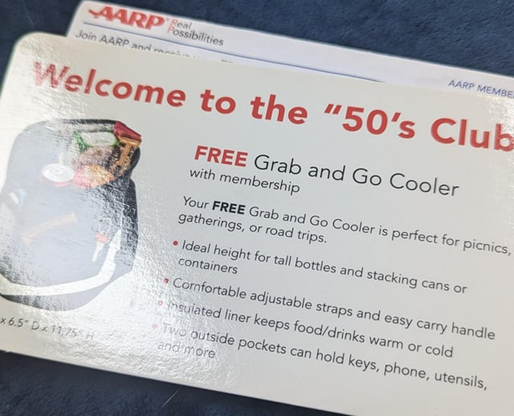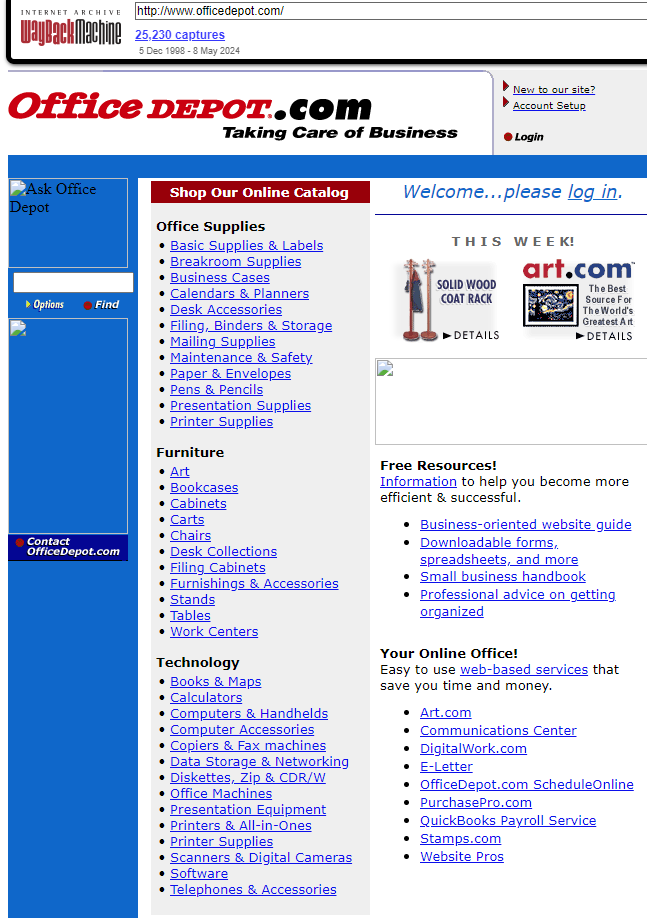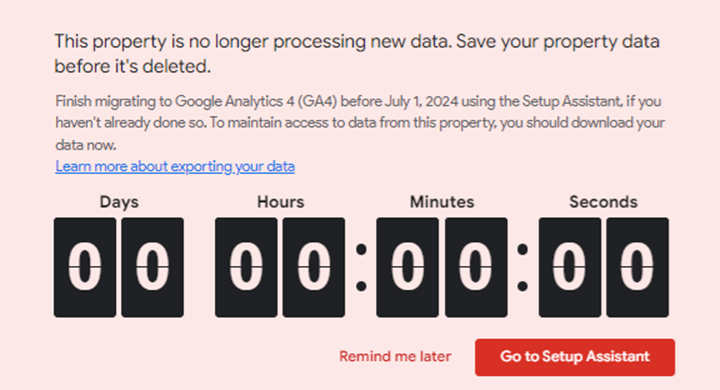Today marks my 50th birthday on this planet. 28 of those years have been focused in digital marketing which started with obtaining a graduate school assistantship at Texas A&M University helping the USDA publish its version 1.1 website back in 1996 with expanded content that included digitizing meat inspection training manual by using OCR conversions of printed document into Word Documents for final editing. A reflection looking back after all these years is that while some things change, other things stay the same.
What I’ve learned over the years is that regardless of the impact of internet has made along with its evolution, the basic principles of successful online marketing campaigns have changed little over the years. Disruption typically takes 80% of the old approach and matched 20% to the approach. The following are some pieces of wisdom that have stood the test of time in the field of digital marketing.
Right Message To The Right Person At The Right Time
 Coined decades ago, when direct marketing was in full growth mode, this adage still lives strong in today’s marketing world despite the extinction of most direct marketing vehicles that transitioned to digital marketing. The internet with its unique ability to collect and process data in real-time took tried and true principles of direct marketing and transformed them to a new channel with dazzling success. Early in my career, I handled digital marketing customer acquisition for AARP membership which at the time allowed for those turning 50 to join the program. Utilizing acquisition email marketing, we rented lists with a daily email flow that targeted those celebrating the Big 5-0 on that milestone date. This hyper-targeting effort that we initiated 20 years ago topped their standards direct mail campaigns with an ROI improvement that exceeded 30%. And today AARP still acts one of one best targeted campaigns in marketing history as I got my membership offer both via mail and online.
Coined decades ago, when direct marketing was in full growth mode, this adage still lives strong in today’s marketing world despite the extinction of most direct marketing vehicles that transitioned to digital marketing. The internet with its unique ability to collect and process data in real-time took tried and true principles of direct marketing and transformed them to a new channel with dazzling success. Early in my career, I handled digital marketing customer acquisition for AARP membership which at the time allowed for those turning 50 to join the program. Utilizing acquisition email marketing, we rented lists with a daily email flow that targeted those celebrating the Big 5-0 on that milestone date. This hyper-targeting effort that we initiated 20 years ago topped their standards direct mail campaigns with an ROI improvement that exceeded 30%. And today AARP still acts one of one best targeted campaigns in marketing history as I got my membership offer both via mail and online.
The Tootsie Pop Test
When the internet first began to take hold, one of the greatest challenges was how to reduce the number of clicks it took for a user to identify the product they were seeking on your website. While at Office Depot, we had over 30,000 products on our website making for an unwieldy experience especially when seeking to refill ink and toner cartridges. We applied the “how many licks does it take to get to the center of a Tootsie Pop” principle to our website to get the person to their destination at all times within three clicks. Constant A/B testing was used to determine what featured elements influenced desired user behavior. These efforts took a few months until we arrived at best in class approach back 23 years ago. This transition of the website to reduce the number of navigation and offer more tools to refine and identify your product led to a 300% increase in website visitor conversion rate on those items. Two decades later our invention of the “Ink and Toner” quick finder is still deployed on the Office Depot website while Amazon still has yet to figure it out. Goes to show that even the biggest and best companies like Amazon still struggle to embrace the Tootsie Pop theory and have great opportunities for improvement facilitating users down better paths to conversion.

Don’t Reinvent The Wheel
 This old business adage has again caught fire in recent years as we find disrupters entering categories that for decades have seen no change whatsoever. In the offline world, we have seen industries turned upside down impacting businesses whose model had gone unchanged for over 50 years instantly pivoted such as the mattress industry. Online, the concept of “Don’t Reinvent The Wheel” was best exhibited in how Google assessed the weaknesses of existing search engines that relied too heavily on self-provided meta data on the website and built a better mousetrap by incorporating a PageRank formula that was influenced by backlinks suggesting content authority and relevancy of that webpage. From this idea sprung a more relevant search engine usage experience that more often delivered the more accurate results a user was seeking. Google was successful in monetizing this improvement in the search user experience and eventually employed similar logic into its advertising serving logic with a Quality Score metric that aimed to best assess the relevancy of ads to search engine request. Google now has transitioned to AI (Artificial Intelligence) with its Google Gemini solution. This work is moving its algorithm ever closer to a personalized experience designed to each user’s interest and which has been the goal of one-to-one marketing since this adage first presented itself over 40 years ago. When I hire new staff, I always ask them will you be able to work in an environment where being wrong 80% of the time means you are doing your job well. Successful marketing is not about getting lucky with a home run idea, those big ideas are few and far between. Success comes from applying best practice applications, seeking out incremental improvements, rinse and repeat. Just like in the story about the Tortoise and the Hare, the person with the long game vision that is willing to adapt when necessary typically wins the race.
This old business adage has again caught fire in recent years as we find disrupters entering categories that for decades have seen no change whatsoever. In the offline world, we have seen industries turned upside down impacting businesses whose model had gone unchanged for over 50 years instantly pivoted such as the mattress industry. Online, the concept of “Don’t Reinvent The Wheel” was best exhibited in how Google assessed the weaknesses of existing search engines that relied too heavily on self-provided meta data on the website and built a better mousetrap by incorporating a PageRank formula that was influenced by backlinks suggesting content authority and relevancy of that webpage. From this idea sprung a more relevant search engine usage experience that more often delivered the more accurate results a user was seeking. Google was successful in monetizing this improvement in the search user experience and eventually employed similar logic into its advertising serving logic with a Quality Score metric that aimed to best assess the relevancy of ads to search engine request. Google now has transitioned to AI (Artificial Intelligence) with its Google Gemini solution. This work is moving its algorithm ever closer to a personalized experience designed to each user’s interest and which has been the goal of one-to-one marketing since this adage first presented itself over 40 years ago. When I hire new staff, I always ask them will you be able to work in an environment where being wrong 80% of the time means you are doing your job well. Successful marketing is not about getting lucky with a home run idea, those big ideas are few and far between. Success comes from applying best practice applications, seeking out incremental improvements, rinse and repeat. Just like in the story about the Tortoise and the Hare, the person with the long game vision that is willing to adapt when necessary typically wins the race.
Marketing Without Data Is Like Driving With Your Eyes Closed
While offline marketing has it challenges in data collection and proof of impact, the internet helped change course. For years, marketers relied on fuzzy data from independent third parties’ solutions like Nielsen and Arbitron to aide in the attribution of revenue generated by your marketing efforts. Nielsen and others tried to pivot their offline panel solutions to the web, but they eventually had limited impact given the fact that Advertisers and Media Providers were now able to collect first party and third party directly. 
This data collection allowed for aggressive optimization of media expenditures on a direct response basis for nearly two decades before marketers in mass realized that the siloed assessment of direct performance benefitted from attribution approaches used in the offline world. We now have the ability to look at first click, last click and data-driven touchpoint to give attributional credit throughout the customers journey and embrace the principle known as the Marketing Rule of 7 that believes that it takes an average of 7 touches with a prospective customer before they are willing to take an action. Always let the data lead you to the answer you seek. Focus on proving yourself wrong, not proving yourself right.
It Costs 8x More To Acquire A New Customer Than To Retain An Existing Customer
 Back in 1983, my former college professor Leonard Berry coined the term “relationship marketing” based on the premise that companies focused the marketing too often on finding a new customer and not enough on retaining. At the time, many felt his ideology was foolish and it would take another 10 years for his academic findings to take hold in the business world. While direct marketers were the first to pick up on his philosophy and incorporate it into their mailings, it was the internet that took his idea to the next level as data collected by advertisers supported his position. As we have learned over time, a successful growing business invests into Customer Acquisition with an understanding of lifetime value of the customer. By doing so, an Advertiser can then properly invest into new Customer Acquisition to grow the business effectively by obtaining enough new customers to offset the loss of existing customers. The longer you keep that existing customer in the fold, the more you can invest to get new customers and outduel your competition for the customer wallet
Back in 1983, my former college professor Leonard Berry coined the term “relationship marketing” based on the premise that companies focused the marketing too often on finding a new customer and not enough on retaining. At the time, many felt his ideology was foolish and it would take another 10 years for his academic findings to take hold in the business world. While direct marketers were the first to pick up on his philosophy and incorporate it into their mailings, it was the internet that took his idea to the next level as data collected by advertisers supported his position. As we have learned over time, a successful growing business invests into Customer Acquisition with an understanding of lifetime value of the customer. By doing so, an Advertiser can then properly invest into new Customer Acquisition to grow the business effectively by obtaining enough new customers to offset the loss of existing customers. The longer you keep that existing customer in the fold, the more you can invest to get new customers and outduel your competition for the customer wallet
Keep It Simple, Stupid (KISS)
A principle founded in the 1960s by the US Navy, it preached keeping design concepts uncomplicated and efficient. The principle was then seized upon by other industry, including the world of marketing, to provide a clear message but also an understanding of the action desired of consumers. These principles transferred to marketing in the form of simplifying projects, processes, products, marketing message and reports. It first showed itself in television ads, particularly within DRTV spots, where advertisers had similar approaches to presenting the phone number and the scripts cut into component to repeat a call to action three times per advertisement. Interspliced into the callouts was a more efficient way to promote the product/service and deliver a reason to believe in the marketing message.

Direct marketers eventually leveraged this concept into cataloging and mailers by incorporating easier means of placing your order by mail form, by phone and eventually “click or call” while presenting a source code for tracking. The internet then took things to the next level to simplify processes further, utilizing phone tracking numbers, applying effort codes to SKU numbers and in some cases uploading mail files with prospecting customer phone number for instantaneous matching. This past March, we watched Google begin to roll out its new Readability scores into the algorithm with a focus targeting a 3rd grade to 5th grade education for the best user experience. As marketing evolves, we should always seek new paths to simplifying the user experience, removing roadblocks, and creating a process that easily understood.





